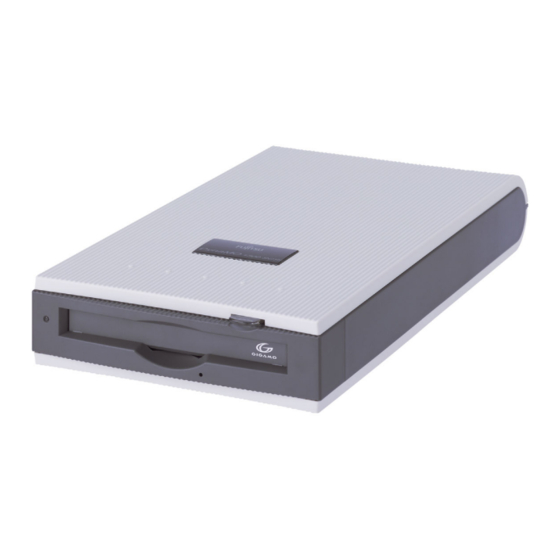Fujitsu DynaMO 2300 Manual do utilizador - Página 47
Procurar online ou descarregar pdf Manual do utilizador para Armazenamento Fujitsu DynaMO 2300. Fujitsu DynaMO 2300 50 páginas. 3.5-inch magneto-optical disk drive

All Windows Users
Format Related Questions
Q1: How are FAT, FAT32, and NTFS file systems different?
A1: The features of each filesystem are as follows.
FAT (File Allocation Table)
The simplest file system supported with Windows. It is possible to use it together with most models
and OS. It manages by dividing the disk into a small units of (=65536) piece of two or less the 16th
power (The divided unit is called a cluster). The size of the cluster is decided depending on the
capacity of a disk, and the file is preserved across two or more clusters.
As for the root directory, 32 sectors are used by one sector 512 bytes (512B*32=16KB use). When one is
used for the file name and the subdirectory name by 8.3 forms *, the numbers of files which can be
stored in the root directory become it up to 512. If a long name is used for the file name and the
subdirectory name, the number of bytes used for the directory entry increases, and the number of
maximum files which can be stored in the result root directory becomes 512 or less. As a result, the file
might not be able to be copied onto the root directory even if there is capacity of an empty disk. * 1:8.3
forms (eight file name bytes and three extension bytes)
FAT32
Windows 95 File system used with Windows since OSR 2.0. It manages by dividing the disk into a
small units of pieces of two or less the 32nd power (about =4,200,000,000). The size of the
maximum file is 4GB. The use efficiency of the disk area improves compared with FAT because the
cluster used is smaller. This structure allows FAT32 to be more resistant to error compared to FAT.
NTFS
File system used with Windows XP/2000/NT. However, it is not possible to treat with Windows Me/
98/95. As for the file and the folder on the NTFS volume, the access control of each Log on User
(setting of access priviledge) is possible. The compression at each file, the disk quarter (allocation
of the disk area that the user can use), the encryption, and the USN journal, etc. are supported
since Windows 2000.
Q2: What is the difference between OS built-in formatter and the FUJITSU MO Formatter.
A2: The features of each formatter are as follows.
OS built-in formatter (Windows NT 4.0 is excluded.)
The magnet optical disk is formatted to the floppy disk form.
The file system which can be selected.
• WindowsMe/98: FAT/FAT32
• WindowsXP/2000: FAT/FAT32/NTFS
Disk Administrator for Windows NT4.0
The MO disk is formatted to the HDD type.
The file system which can be selected is FAT/NTFS.
FUJITSU MO Fomatter
Both the floppy disk form and the HDD type (Only by one partition) are supported.
The file system which can be selected is FAT/FAT32.
44
